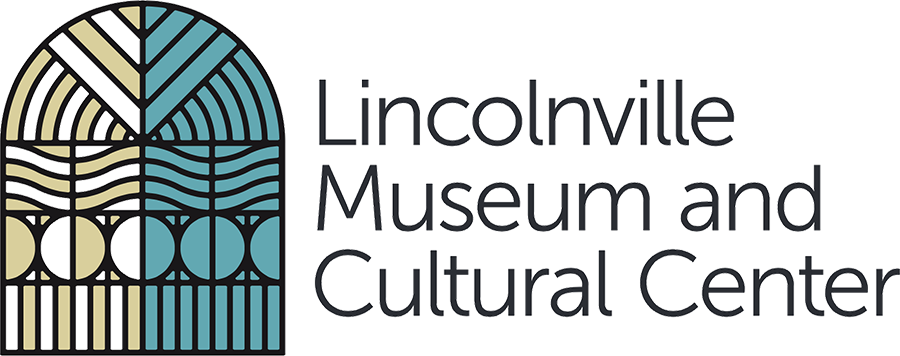Celebrating Kwanzaa
Kwanzaa is a Pan-African holiday created by Dr. Maulana Karenga. During the 7 days of festivities, family, community and culture are celebrated through the Nguzo Saba (the Seven Principles.) This year, we will highlight the daily principles through our collection. We will discuss how items from our collection relate to the Nguzo Saba.
Umoja means unity, specifically “To strive for and maintain unity in the family, community, nation, and race.” Umoja is the foundational principle, focusing on unity in multiple tiers: Family, Intergenerational, Community, and Pan-African unity. Applying this locally, the Lincolnville community unified their members through celebrations such as the Emancipation Day Parade, which stemmed from the Emancipation Proclamation in 1863. Here is a Richard Twine photo of the 60th anniversary of Emancipation Day, celebrated on December 29th, 1922. The photograph shows the community unified in a celebration of their freedom, marching across town together. The joy of this momentous historic event is seen in the faces of the participants, especially the clarinet player in the front who is the center of Twine’s photograph. This picture and many other Emancipation Day photos are located at the Saint Augustine Historical Society.
After Umoja comes the second principle Kujichagulia. Kujichagulia represents self-determination and defining Identity for oneself. It emphasizes the autonomy in creating one’s own identity, instead of letting others define it. The second principle also expands upon using history and culture as part of defining identity. The Gullah Geechee culture was founded as their ancestors were forced into slavery along the southern East Coast. These people are the descendants of those slaves. Despite being uprooted, the Gullah Geechee people maintained their identity through food, the arts, folklore and rituals. Shown here are some Gullah Geechee sweetgrass baskets, historically used for rice cultivation. The baskets are composed of sweetgrass, bulrush, long leaf pine needles, which are wrapped together with strips of palmetto leaves. The art of weaving these baskets takes great craftsmanship, which have been passed down through generations of Gullah Geechee descendants.
Ujima represents the responsibility to work together, supporting and cooperating with each other to create a stronger community. Here shown is a painting from our collections, where the community is washing their linens together. A long procession of people (and a few donkeys) carrying baskets and loads of linens down to the cool water is delineated as a wholesome scene through its vivid colors and bold brushstrokes. This painting communicates how maintaining work and responsibility collectively can create a thriving community.
On the fourth day of Kwanzaa, celebrants consider Ujamaa, meaning cooperative economics. Ujamaa stresses shared work and wealth, as well as economic self-reliance as to prevent the exploitation of anyone. This photo of Frank B. Butler working alongside his family in the grocery store perfectly encapsulates this theme, as Butler worked to provide groceries, housing, and later, a beach to the Black St. Augustine community, who at the time lived under segregation and Jim Crow laws. Butler took his wealth and created a greater good for his community, investing in what was needed and making it accessible.
Nia is the fifth principle of the Nguzo Saba. According to the official Kwanzaa website, it means “to make our collective vocation the building and developing of our community in order to restore our people to their traditional greatness.” In relation to this principle, Power Figure by Joe Segal represents this idea of purpose as it discusses the connection between Congo power figures and the Plaza de la Constitución in Saint Augustine. This piece was part of a larger project, the Obelisk Art 450, where artists designed obelisks representing themes of Compassion, Human Rights, Freedom and Democracy.
Kuumba, the sixth principle, represents creativity and its impact on the community. Kuumba stresses the importance of using creativity to leave the world more beautiful than as it was found. Its application is just that, shown here is an artwork depicting two women using solely butterfly wings. The piece is part of a larger collection of works that were purchased in Senegal. The grace of the figures is emphasized through the fragility of the butterfly. Yet, these figures hold power and the viewer’s attention through its beauty. The world is definitely left more beautiful with these works in it.
Last but not least, Imani is the final principle of Nguzo Saba. Imani means faith, and the belief in community and family, as well as victory in struggles. Through Imani, the rest of the principles are made possible and sustained throughout the future generations. Imani was shown in those protesting during the Civil Rights movement. Their strength and persistence to stand up for their rights and bettering their community despite imprisonment and fear for their lives and well-being fully encompasses Imani. Their efforts made national news, eventually leading to a victory in the fight for civil rights: the Civil Rights Act of 1965.







